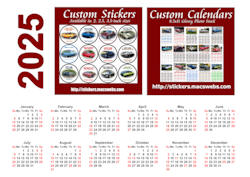Fisher Body Number Plate
Section Links
FISHER BODY NUMBER PLATES
FISHER BODY NUMBER PLATES ANALYSIS
GENERAL DECODING
Atlanta, Georgia (ATL)
Baltimore, Maryland (BAL)
Flint, Michigan (FL1)
Framingham, Massachusetts (FRA)
Fremont, California (BF)
KANSAS CITY, MISSOURI (KAN)
Oshawa, Ontario
Fisher Body Number Plate Analysis and Breakdown
[ Introduction ] | [ Atlanta ] | [ Baltimore ] | [ Flint ] | [ Framingham ] | [ Fremont ] | [ KANSAS CITY ] | [ Oshawa ]
Introduction: For quite some time I’ve had an intense interest in Fisher Body Number plates, a.k.a. trim tag, cowl tag, firewall tag, etc. for 1964 through 1972 Chevelles - hereafter referred to as ‘trim tag’ since that seems to be most common moniker for these little jewels. Their diversity, not only between the different years but between the different plants in a given year, has always fascinated me. This page deals only with 1966 Chevelle trim tags.
The third model year of the Chevelle, 1966, saw its final assembly production occur at 6 plants in the U.S.; Atlanta, Georgia - Baltimore, Maryland - Fremont, California - Flint, Michigan - Framingham, Massachusetts - Kansas City, Missouri. Oshawa, Ontario assembled Chevelles for GM of Canada.
I’ll not attempt to decode what each trim code, paint code, and where applicable, group option codes in this series represent. Click on any plant's link in the navigation menu on the left of the page for detailed information for interior, paint, and group option codes.
All research to date indicates that each Fisher Body plant assigned body numbers in sequential order based on the particular Fisher Body style number. This means that a 2-door sedan built immediately after a Malibu convertible would not have sequential body numbers, or even close, since they are different styles. Depending on production numbers of a particular body style number throughout the model year, the above 2-door sedan and Malibu convertible would be vastly different on a given day of assembly but the next 2-door sedan or Malibu convertible would have a sequential body number for that particular style.
The Fisher Body unit number has nothing to do with the vehicle identification number (VIN) assigned by GM at final assembly and if any were to match, it’d be a coincidence.
With the exception of Fremont trim tags through at least 1A, the format of all plant's blank trim tags was the same. Fremont retained the older, 1965 style trim tag through 1A and begin using the standardized format of the other plants during 1B production. Fremont is the only U.S. final assembly plant to use a style number for L6 engined Chevelles with an odd 3rd digit in the style designation, all other U.S. plants used an even third digit in the style designation for both L6 and V8 Chevelles.
Beginning around the 1st or second week of January 1966 a single small hole was punched into the tag, generally around the lower left corner, to indicate the car was equipped with anchor locations for the optional shoulder belt.
With that, let's begin 1966. Simply click a plant link above.




